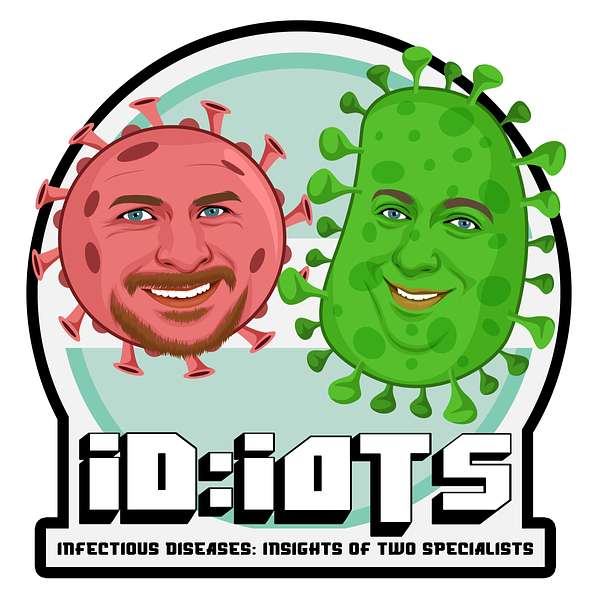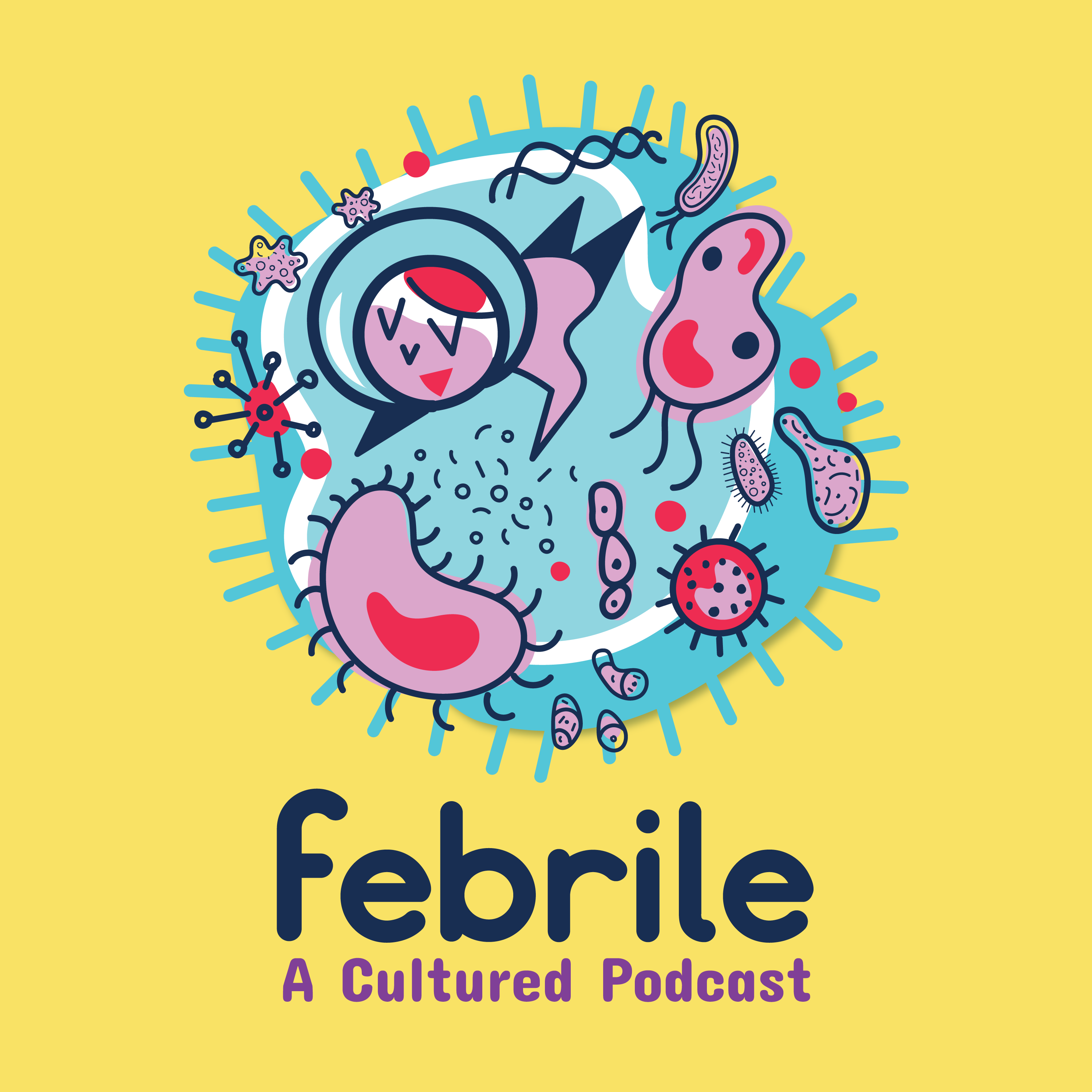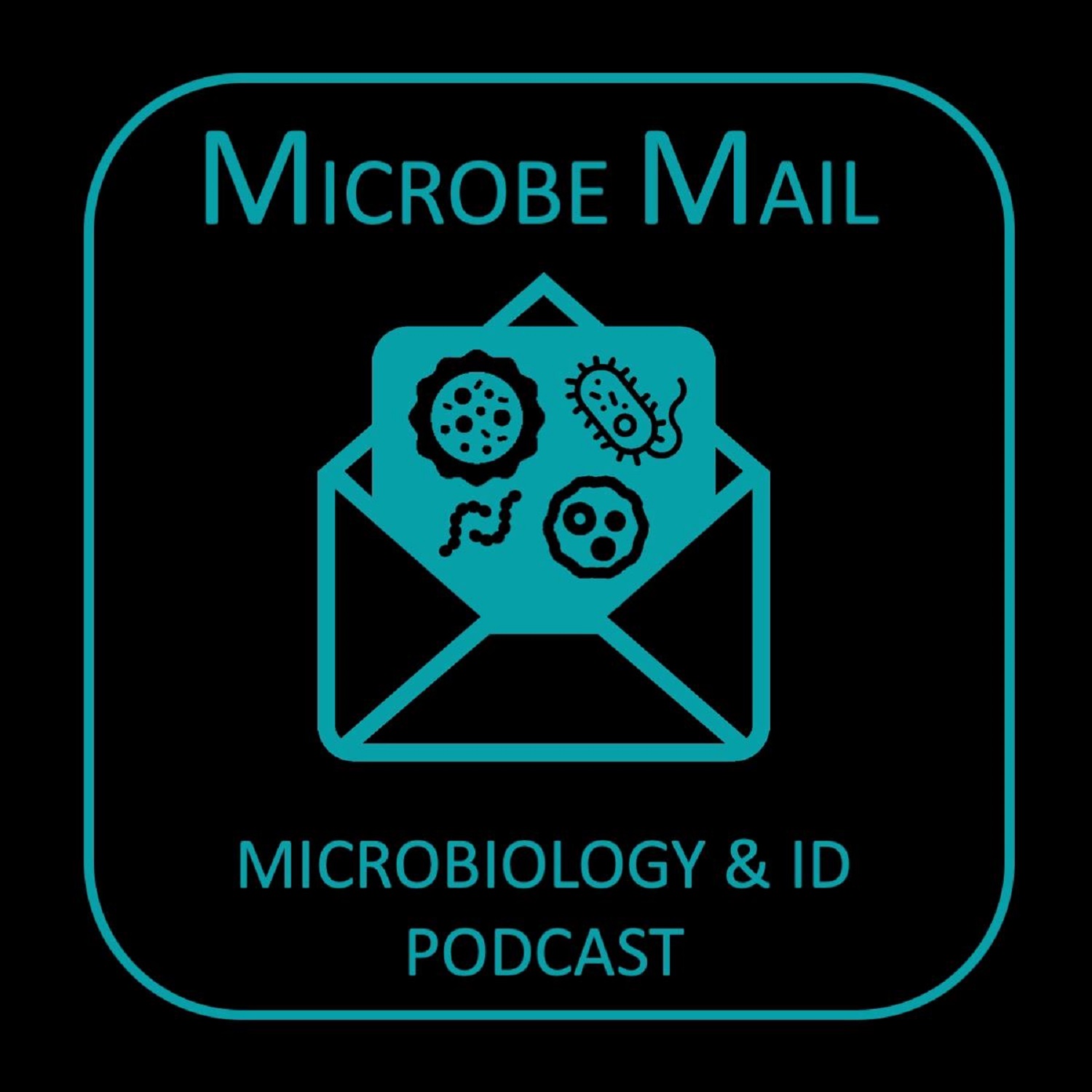
ID:IOTS - Infectious Disease Insight Of Two Specialists
Join Callum and Jame, two infectious diseases doctors, as they discuss everything you need to know to diagnose and treat infections. Aimed at doctors and clinical staff working in the UK.
Episode notes here: https://t.ly/8DyqW
Queries, comments, suggestions to idiotspodcasting@gmail.com
ID:IOTS - Infectious Disease Insight Of Two Specialists
117. Pasteurella
Take a break from those pesky fungi to learn about another pesky gram-negative! This week it's Pasteurella.
Questions, comments, suggestions to idiotspodcasting@gmail.com or on Bluesky @idiots-pod.bsky.social
Prep notes for completed episodes can be found here (Not all episodes have prep notes).
If you are enjoying the podcast please leave a review on your preferred podcast app!
Feel like giving back? Donations of caffeine gratefully received!
https://www.buymeacoffee.com/idiotspod
Callum, how you doing?
Callum:I'm good. I was just thinking the other day I was teaching some medical students and I was feeling very old and I thought to myself, Callum, it's really past your time. It's. It's really past your era, past your era,
Jame:oh, sorry. Was that it?
Callum:past your era.
Jame:Uh, yeah. Sorry. No, so sometimes they're so subtle you can barely notice them. Callum, and what a coincidence that is.'cause what are we discussing today?
Callum:We are talking about Ella.
Jame:Another bug episode. We haven't done one of these in ages.
Callum:No, we need to finish the bacteria. Now we're the fungi are, are sort of crowding them out. You know, it's almost like a biome and a fungi and bacteria competing and killing each other off with increasingly potent drugs that they produce.
Jame:Um, don't remind me, but don't worry. I will concentrate on these gram negatives and I will finish them if it kills me, which it may just,
Callum:Yeah.
Jame:So why don't you take us a little bit through the, introduction to the Pastor Alena Scale.
Callum:Yeah, so Pastor, um, this is a name for a very famous microbiology, Louis Pasture.
Jame:Paste. Never heard of him.
Callum:well he, we've got many things from pasture. He identified the bacteria now known as pasture malt seda, and he identified as agents of chicken cholera. Which is interesting. I didn't actually know what it calls chicken cholera.
Jame:Yeah, I
Callum:Um,
Jame:know. Well, I mean, obviously it's not causing cholera, but uh, presumably it was a catchall term for
Callum:well, yeah, that's true. It's not,
Jame:and chicken or
Callum:yeah, yeah, yeah. Pure chicken.
Jame:Yeah.
Callum:Um,
Jame:it normally?
Callum:so normally most people will be used to seeing pastoral and clinical, cases in people that have had animal bites, and it's part of the normal microbiome of the, the sort of oral cavity of, of animals like cats and dogs. Um, and it can also cause other infections, so it can cause lower respiratory tract infections and cattle, sheep, birds, rabbits. So it's really a zoonotic infection. It's not something that you would expect to find in a human.
Jame:No, it causes disease in humans. It's not part of the microbiome in humans
Callum:Yeah.
Jame:part of the family. Pastoral. SEI, uh, is that not right? Callum?
Callum:Yeah. Which includes
Jame:And now it's time for Call. And Jane read the alternate, uh, names of the bacteria. She do you want to start?
Callum:Actino, bacillus,
Jame:AOB batter.
Callum:Avi Bacterium,
Jame:Basia
Callum:Vinia.
Jame:Bis Guardia colono Batter? Gallo Bacterium.
Callum:hemo,
Jame:Ophuls
Callum:lone Pine,
Jame:Manheim.
Callum:necro.
Jame:Necro,
Callum:I can't take this seriously.
Jame:Do that again.
Callum:Neer
Jame:Necro
Callum:necro.
Jame:Ella, Jesus. I should have gone first. Ella
Callum:got all the easy ones for,
Jame:Fo Coober. And vol, and that's all the geniuses of pastoral a CI.
Callum:you have to remember all of.
Jame:Well, I, I, I've put in bold in the prep notes, like the ones that actually
Callum:Yeah,
Jame:and
Callum:so the ones that matter? Yeah,
Jame:actually. So, aggregator battery, because
Callum:yeah, yeah.
Jame:'cause it's another hasek. And pastoral itself. Everything else is very forgettable and in some cases unpronounceable, apparently.
Callum:Yeah, uh, that's, yeah. Uh, so there's 14 different species of pasteurella, um, and specifically within pasteurella, malto, ceda, the, which is the type species. There's three, uh, subspecies. Uh, within that, uh, the free. Subspecies are seda, Sept and gda, um, which can be differentiated by whether or not they ferment. Sorbitol and dool are two
Jame:we've got
Callum:sugars
Jame:in the prep notes, but we're not gonna go through it. Um, yeah. And then the other
Callum:and, and there and seda and cats and dogs. Uh, the other one's to know about soldiers, uh, pastoral Canis. Which you might think is in dogs. and there's two biotypes of that. One is in dog mouths and two is in, uh, baby cows or dog and cat bites.
Jame:Hmm.
Callum:And then the final one is pastoral or pneumo tropical, and that's in rat or Guinea pig.
Jame:Yeah.
Callum:there's some other ones like Erogenous, Betty d Mattis, Damas cabal, or. I've never, I've heard of. So I think I've seen, just thinking about what I've seen in lab reports. So eda, definitely Canis, yes. Rarely erogenous. Yes. Um, I don't think I've seen the rest of them thinking maybe around.
Jame:you if
Callum:Yeah.
Jame:but I don't really, I've not really, uh, any other ex except for past on myself. So, yeah, I,
Callum:think there's some,
Jame:are very uncommon.
Callum:something about pastoral erogenous is ringing a vague bell. I feel like listening to Let's Talk Micro, the Extra Excellent, um, podcast by Louis. Um, he said something about pastoral erogenous. There was some unique microbiological
Jame:I
Callum:feature about it.
Jame:uh, something on, uh, pastor, an episode on Pastor, hasn't he?
Callum:Yeah, and I, I definitely remember, but I won't tell you dear listener, so that you go and listen to, to his episode about pastoral. Definitely haven't forgotten what the interesting thing was. I remember thinking like,
Jame:we
Callum:wow,
Jame:put a link to that in the prep notes. So you're doing that Kyle?
Callum:okay.
Jame:Okay. Um, let me take you through some of the nuts and bolts of, uh, of paella. So, as you say, Mo, most of the diseases caused by paella or malda, uh, or Malda or SEDA or Al-Qaeda, are we hard seeing that sea in the middle of malda? I dunno. Uh, one for the history books, uh, and usually it is. Related to a bite from, uh, a canine or a feline, so cat or dog mouths where they form part of the normal microbiome. They've also been recorded in, after contact with something called red kangaroos or potus. Do you know what a pot is? Callum?
Callum:No.
Jame:It's a marsupial rat thing, that you would find in Australia where marsupials, live mostly. and the risk factor is, of course, animal contact bites are more likely to result in infection than scratches, which are more likely than licks, that are more likely than regular contact, you know, stroking your dog or, petting your cat, et cetera, et cetera. But the risk factors for. Invasive infection, particularly septic arthritis, would be diabetes, advanced age, prosthetic joints, steroids, alcoholism, uh, transplant patients, or COPD. So you can sort of look at that list. You can think, oh, all these people have vague levels of immunocompromised, or they're just old, uh, or they've got a site which has the potential to be colonized, uh, prosthetic joints, metal and plastic. in terms of pathogenic mechanisms, there's a few things Pastor Ella can do. I'm not sure how much of this I knew actually before researching for this episode, but they've got a polysaccharide capsule that tears host immune mediated destruction. They've got lipopolysaccharide, obviously they've got some iron acquisition proteins which help them survive, in the host. and then they've got something called past and maltose. Dioxin. I don't know if. It's only pastoral and marda that has this, that activates several G proteins, which leads to cytoskeletal, rearrangement, proliferation, differentiation, and the survival of infected cells.
Callum:Oh.
Jame:Yeah. And what does all that cause? It causes something called past Osis. Callum. have you heard of it referred to as that?
Callum:No.
Jame:No, I don't think so. So this is, skin or soft tissue infection. to pasteurella, which of course you would only know after you had the culture, results back. It's cellulitis, swelling, and bloody drainage at the wooden site. And then that can lead to certain sequela such as septic arthritis if you're sort of bitten near a joint or the bug gets into the joint, space, uh, an abscess and very rarely it can be a cause of necrotizing fasciitis, and pneumonia. As well. So I guess that's why COPD is a risk factor, there for more invasive infection.
Callum:Yeah, when you see patients that, so I think often the clinical scenario is bitten by a cat, and I guess cat bites tend to be worse than dog bites in general because, well I think one,'cause cats are bastards, but, um, two
Jame:Clearly
Callum:come on.
Jame:person talking here.
Callum:Well, you know, I like cats as well, but, you know, I guess the other thing is that their, their teeth are, are much more puncturing. Like dogs are sort of like ripping flesh, whereas cats are trying to puncture and I think that's a, a large part of maybe how they, they would predate in the wild as well. So they puncture in that deep wound and the organisms.
Jame:But the, uh, puncturing that you would get with the dog bite would be less deep. And therefore less introduction, which is why usually when you've got an animal bite and it's a cat bite, a lot of places will always treat with antibiotics, whereas
Callum:Yeah,
Jame:they would only treat if there were signs of in, uh, cellulitis down the line.
Callum:and if you think about where you're likely to be bit by a cat, it's often the extremities, it's often the, the hands and in the hands. There's a lot of, you know, I guess. Um, planes of tissue, a lot of tendons, a lot of sheaths. There's a lot of areas where if you get an infection, it doesn't drain away naturally like you might in like a big fleshy bit of your leg or something. So these infections can be really problematic and often need sort of multiple debridement and theater and wash out. And certainly our plastics unit locally
Jame:Can get very nasty, uh, can't they? Whereas.
Callum:Technical term. Yeah,
Jame:Yeah. Um, I mean, I suppose that most animal bites are dealt with in the emergency department and, you know, we never hear about them, but we, we are only seeing the
Callum:that's true.
Jame:stuff that's hard to treat.
Callum:Yeah. Um.
Jame:through the micro cal.
Callum:So this is, uh, in terms of the, the, the bug itself, so it's a gram negative, the shape. So it's usually sort of o um, oval. It's a rod, bacillus, but it's very short and it's got this, quite distinctive appearance. It'll often have where it's oval and it's got, bipolar staining. So there's like a sort of safety clip. Is the idea. If you see a good grandma, we'll we'll pop a picture in or something.
Jame:All
Callum:Um, or actually we'll just put a link to Microbe Canvas, which we've talked about before, which is a really excellent website.
Jame:Do.
Callum:Um, it's got, um, you know, really, great photos rather than stealing their photos, which we wouldn't feel good about. We can just link you to them. So often they're single or pairs or can be in short chains and they're non-oral, in terms of the agars, so their facultatively anaerobic so they can survive in an anaerobic environments, but also in air. And they are enhancing their growth by CO2. They grow at 35 to 37 degrees Celsius in about 16 to 48 hours, and they'll grow on blood agar. They don't grow in McConkey, um, and they don't go well on cla. so you'll just tend to see this under blood agar. And then the colonies themselves, so they're generally sort of gray. They're quite viscous. They're round or they can be a bit rough and irregular. And the encapsulated strains tend to be quite oid. They will grow in chocolate egg gar as well and still looks a little bit different. They're not lytic. Apparently they have a distinctive smell, like a mouse po probably due to the formation of indole, but don't smell plates.
Jame:particularly smell a, this is not something I was aware of.
Callum:I've not smelt it and we're just gonna move on. So, and then I guess looking at the colony, so, uh, differentiating from other things. So, hemophilus is in that same family, so that might be something it looks a bit like, and again, it's a gram negative. I. Similarish in gram stain, but opus the, you'll see that, heuss won't grow in blood agar without specific factors like X and V. So that would differentiate it pretty well. And then actino, bacillus is something else. But that's not an organism You are expecting to see so much cat and dogs or the clinical isolated, the clinical history will really will help you differentiate that.
Jame:enough. Okay.
Callum:And, if you've got someone who's had a. A cat or dog bite or an animal bite of some sort. I actually, it was a really interesting paper, maybe I can link this as well. It's a bit old now, but it was, a review article and they were talking about the microbiology of like the bites of basically every animal that they could find in the literature. So it was like cats and dogs and stuff. And then it was like seagull and um, Komodo Dragon, just also random stuff. It's quite a fun one, to go back and look at. So maybe I'll link that in as well. In terms of, biochemical tests, uh, so, um, Ella are oxidates positive. Cataly positive. Indu positive. And the URI is negative.
Jame:Any other ways to confirm the identification?
Callum:well, you could just chuck at the maloff, couldn't you? But I. Um, as with most things, but basically how you, how are you gonna, so you're not gonna, you know, do everything in the mul off, but, um, um.
Jame:you're gonna do a lot of things in the molded off.
Callum:The picture in the show notes of the flow chart in the SMI.
Jame:Yeah.
Callum:The other thing I guess is the oxidase. And again, some other species or ssus was one thing that we mentioned before. Catalase and oxidase positive, there's, there's lots of other organisms that will have that pattern. I guess there's, cyto. Is another one, but that's more sort of long, looks quite different,
Jame:Yeah, we're coming to that.
Callum:homophily and so on. but the gram stain and the growth under the plate, all that together will, will help.
Jame:Fine. Right. Let's talk about treatment now. So, like we've said, usually this is the context of an animal bite. And luckily enough, it is reasonably sensitive to,, a bunch of different, uh, agents, but there's only a few breakpoints available, actually, so generally it will be sensitive to chloramphenicol, penicillin, tetracyclines, and electrolytes. Although we don't have break points for all of those agents, we've got break points for ampicillin slash amoxicillin slash oxic, cfet taxine, but not other cephalosporins, cipro slash levofloxacin, doxycycline and cotrimoxazole. So we don't have brain points for the macrolides, and we don't have brain points for chloramphenicol, but they are usually sensitive to those. But you won't get an interpretation, for them and no break point has been sent.
Callum:I from ucast,
Jame:Yeah.
Callum:I dunno about CLSI. We are not the CLSI podcast. Sorry.
Jame:Yeah. This is all from muca, sorry, CLSI. Uh, people. You're on your own. It's like a third of our listenership. I did think actually the other day, maybe I should just like look at CLSI as
Callum:we're just not used to using it. And they've got for that and they've got Louis so.
Jame:they have enough podcasts, frankly. All right., and then the last thing to say is that I, I, I try to look up resistance mechanisms because, just something that we like to include at the end, you know, things to watch out for. I mean, frankly, there's not a lot out there that I could find, but some of them produce betas and then will be penicillin resistant. not very common Co Co lab resistance has been reported. Um, there was a, there's a case report, I think I've put it in the, prep notes, but it was a, yeah, it was a coLab resistant prosthetic joint infection. Uh, so it's really been rare, in humans and they, they, they sort of if this is related to the penicillin use in animal feeds. So antibiotic use in agriculture is a sort of hot topic. Um, and that might lead to the evolution of resistance in amongst other things. Pastor Ella uh, and then, uh, tetracycline resistance has also been reported, as well. So doxy may not be on the cards, so, but if you're wanting to target past rella, you've got other options. Let's say, you've got your quinolone, you've got your cot, trimm, et cetera, et cetera.
Callum:Yeah, I have to say locally or, guidance for. For Cat Bite is give kcl and for dog bite, I think it is give kcl if there's signs of infection. And that's often our sort of go-to just because the this and the other big organism I guess that we'd think about in cat Bites would be Kacy Aphagia. Um, there's lots of other organisms that you might expect to see as well, but those are the two big ones. And I guess we'll cover Captain side of soon.
Jame:Very soon, Callum to be continued.
Callum:I've just fought of a pun for capital say to,
Jame:Oh, good. Save it for next week.
Podcasts we love
Check out these other fine podcasts recommended by us, not an algorithm.

Febrile
Sara Dong
Microbe Mail
Vindana Chibabhai
Let's Talk Micro
Luis Plaza
Breakpoints
Society of Infectious Diseases Pharmacists
Clinical Conversations
Royal College of Physicians of Edinburgh